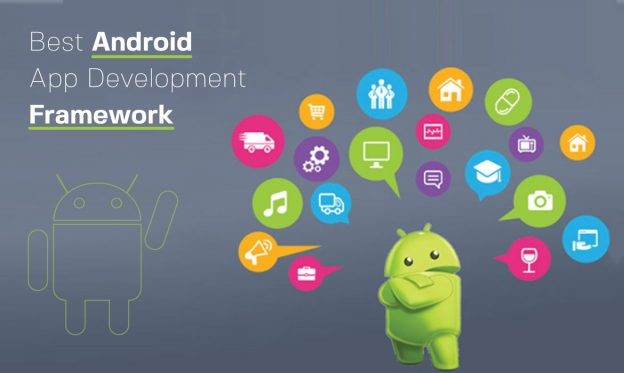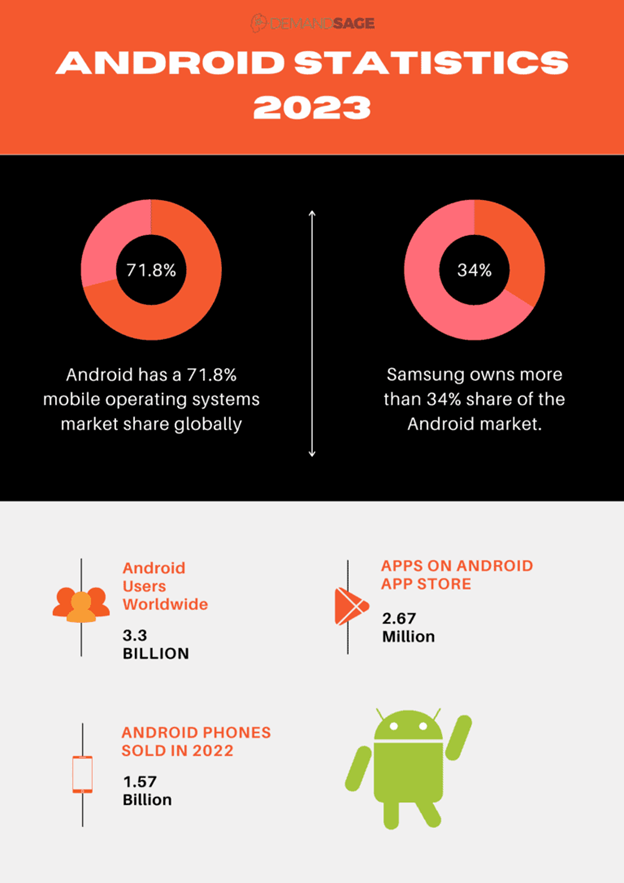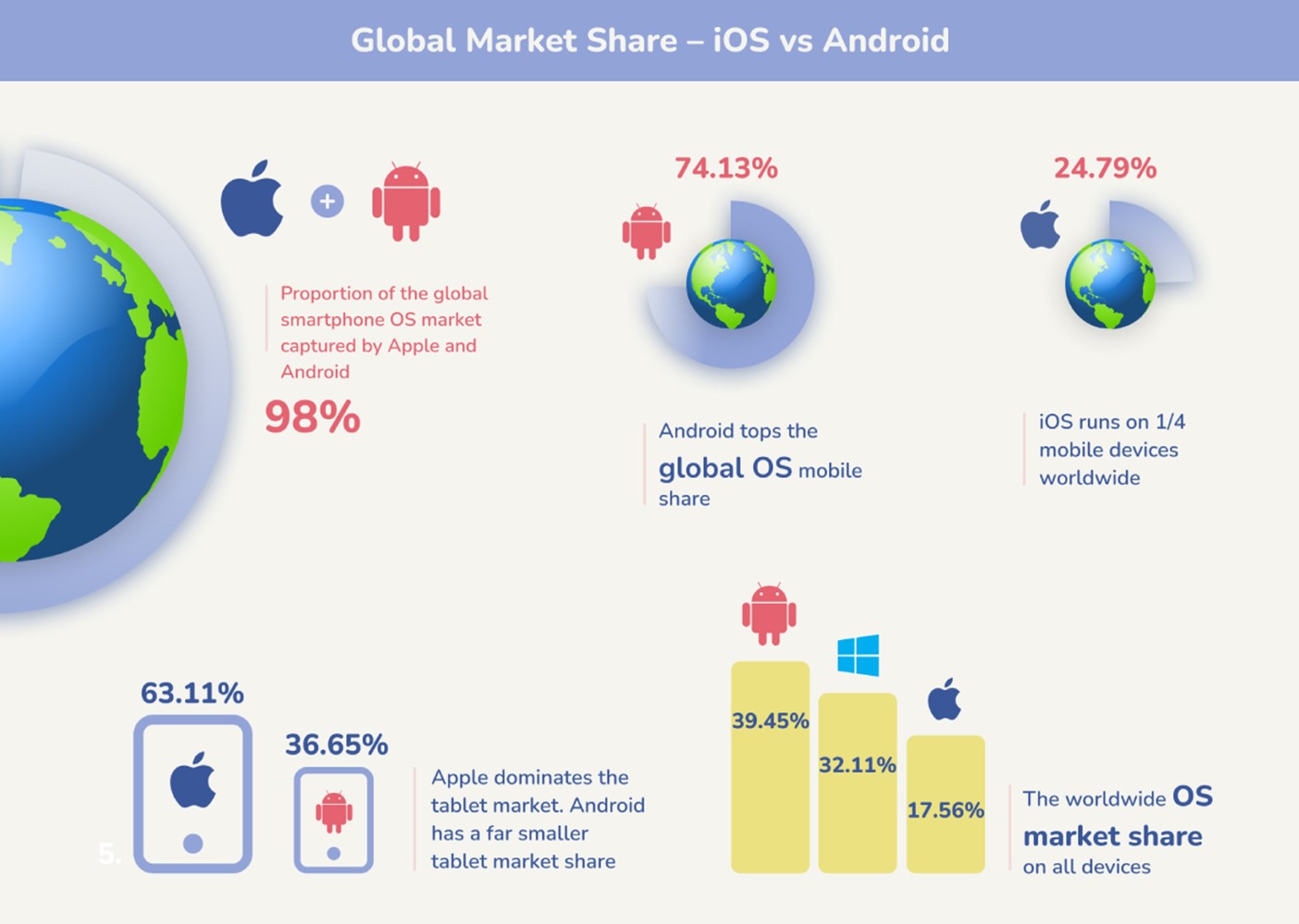In today’s fast-paced world, our reliance on technology is skyrocketing. As a result, having an in-depth understanding of the app development world becomes crucial, especially for organizations looking to hire Android developers.
In this informative blog, we will dig into the world of Android development, shedding light on the cutting-edge tools detrimental to the industry.
By exploring these innovative tools, recruiters can gain valuable insights that will help them in making informed decisions when it comes to hiring Android developers.
Table of Contents
Embracing the Tech Revolution: Unveiling the Best Tools for Android Development in 2023
1. Flutter
A master product supported by Google, Flutter is an open-source framework that allows developers to build apps on multiple platforms from a single codebase.
Key Features:
- Code is easily compilable to HTML, Intel machine code, and even JavaScript, making the process fairly simple and contributing to the fast performance of any device.
- It is enabled with a set of performance and debugging tools that helps in building and deploying interactive mobile apps.
- Being an open-source framework, there is no secrecy or mystery, one can view the latest updates, ask questions and even refer to the issues raised in the past allowing and enabling developers to build customizable interfaces.
2. Ionic
Ionic is a hybrid, cross-platform software development kit that brings together a group of tools enabling the development of fast and engaging mobile applications.
Key Features:
- It’s an open-source framework compatible with multiple platforms.
- It enables the use of multiple UI components such as tabs, filters, forms, and navigation sheets.
- It is equipped with features to develop progressive web applications combining the best of web and native app domains.
3. .NET
It is a multi-platform Application user interface (MAUI) framework built on .NET allowing developers to write codes in C# on a single codebase.
Key Features:
- Integrates the power of visual studio with .NET MAUI.
- .NET offers a library of learning resources that aid developers to build apps using access videos, code samples, etc.
- It enables the use of components from different component vendors resulting in fast and productive app development.
4. React Native
The best native app development framework that uses React, the finest Javascript library for building engaging and pleasing UIs.
Key features:
- It allows you to make changes in existing apps and also build new ones.
- React Native enables one team to maintain multiple platforms and share a single technology.
- It provides multiple UI components and plugins.
- It iterates at a very fast speed and lets you see the changes as soon as you save.
5. Apache Cordova
Apache Cordova is an open-source platform for the development of functional and high-performing UI apps using web technologies such as HTML5, CSS3, and Javascript.
Key features:
- Its ability to allow applications to access device-level APIs is a huge plus.
- It enables developers to mix native application components with a web view.
- Its library of core plugins is intense and at the same time, it supports multiple third-party plugins that may not be available on all platforms.
6. JQuery mobile
Jquery is a cross-platform framework that allows you to build highly responsive applications that will work on all platforms, from Android to IOs to Windows to the web. If you want to build an innovative and user-friendly mobile application, it’s essential to hire mobile app developers with knowledge in JQuery.
Key features:
- It provides customization solutions to developers through the use of ThemeRoller.
- It uses an HTML5 configuration that is easy to learn and deploy.
- It follows responsive web design principles making it easy for the widgets and designs to fit inside any layout system.
7. Framework7
An open-source framework that is popular with developers because of its ease of use. It uses web technologies like HTML5 and Javascript and the process is as seamless as creating a website.
Key Features:
- The apps built on this platform have a native look and feel.
- It has a prototype tool that allows you to showcase the app prototype as soon as it’s made.
- It comes with an enviable collection of UI elements and widgets like pop up, dialogs, action sheets, etc.
8. Onsen UI
A framework that claims zero setup time because of the use of favored web technologies like CSS, HTML5, and Javascript.
Key Features:
- Provides ready-to-use components with automatic styling that changes the appearance of the app basis the platform being used.
- Inbuilt animations are optimized to perform well even on low-end devices.
- It works great in conjunction with Monaca, which helps with debugging and code checking and also uploading your app on the cloud once ready.
Developing applications on multiple platforms can not only be time-consuming but also a costly affair. However, the use of cross-platform frameworks provides an invaluable solution for both developers and employers.
Developers save an immense amount of time by writing code and deploying it across platforms and at the same time organizations save a lot of money and resources by not having to hire a different team for each platform.
Tips for Hiring Android Developers
Statistically, there are around 2.5 Million Android app users available, all thanks to the Android developers who create these apps.
As these skilled individuals play a pivotal role in shaping this thriving ecosystem, it becomes crucial for organizations to master the art of hiring the best Android developers. Below are a few effective hiring tips:
- Test the knowledge and expertise of the developer.
- Make sure they are adept with the latest technology and app-building frameworks.
- Stress on their experience and portfolio.
- Be clear about budgets and timelines when hiring on a project basis.
To Sum It Up
With Android reigning as the world’s largest operating system, boasting a staggering market share of over 70%, employers are constantly on their toes and on the lookout for hiring Android developers who are proficient with all the current and popular development frameworks.
In this fast-paced ecosystem, the highlighted frameworks each possess unique strengths and weaknesses. Organizations must discern and embrace the frameworks that align best with their specific needs and objectives.
By exploring the advantages and considerations of these frameworks, employers can gain a comprehensive understanding, enabling them to make informed decisions in their quest of hiring Android developers.




